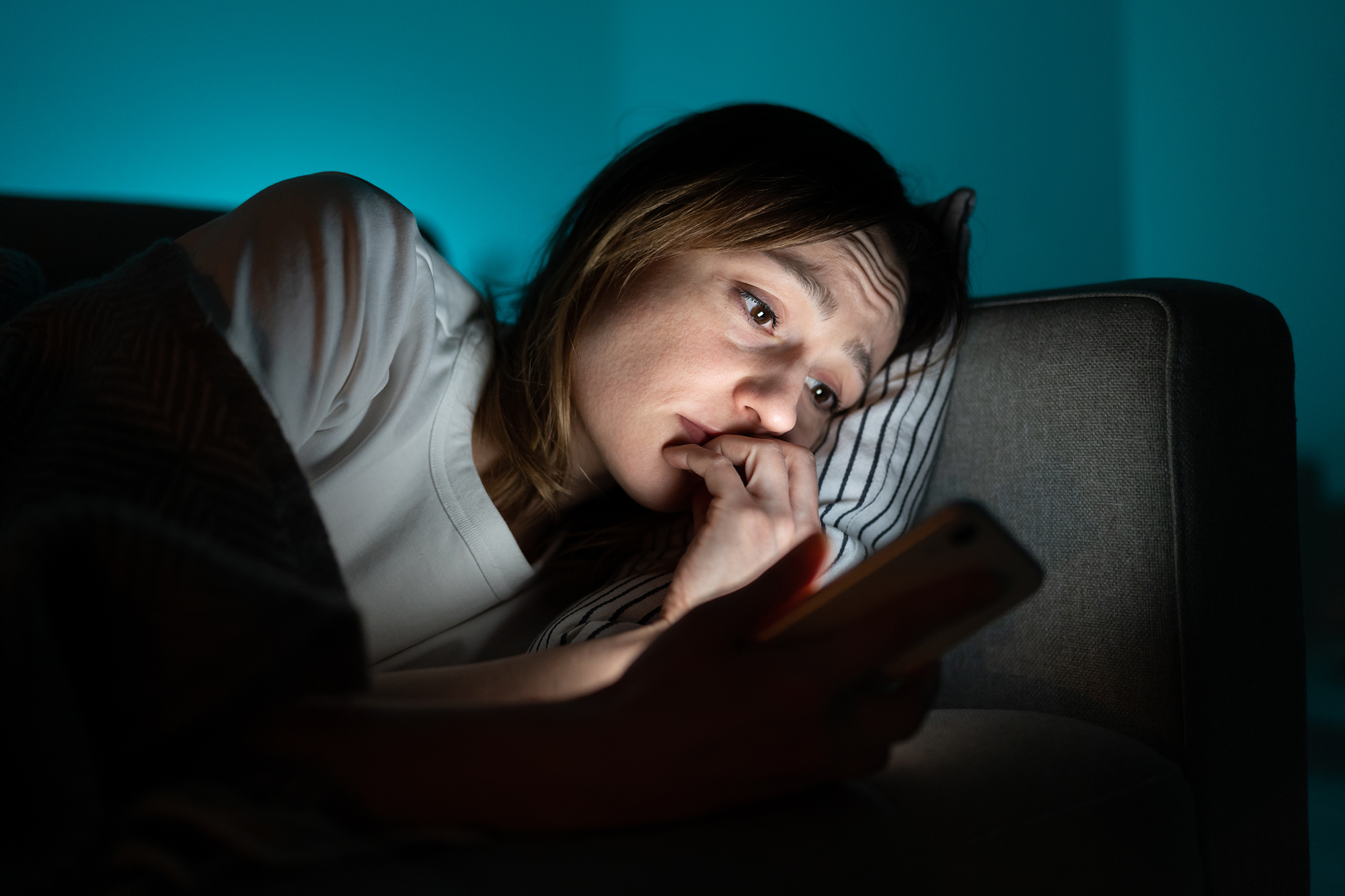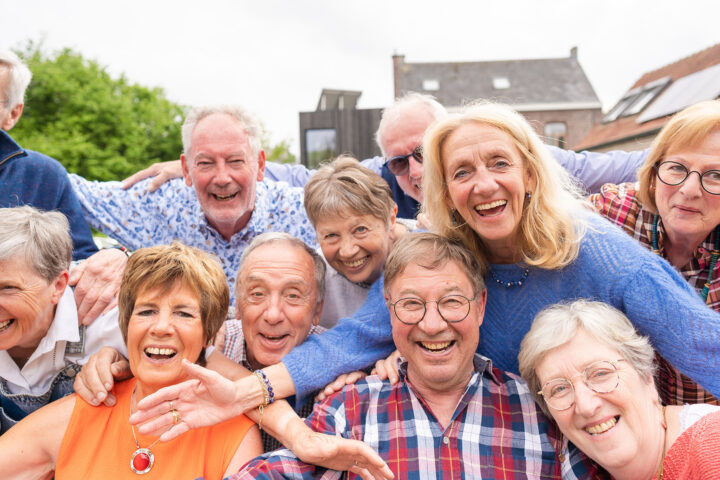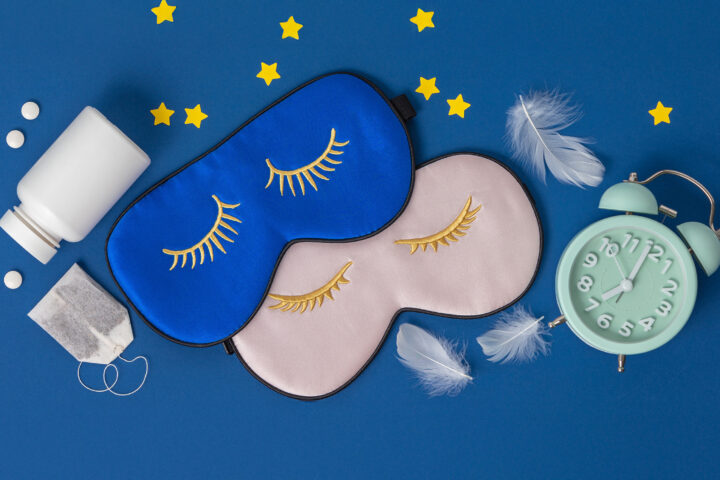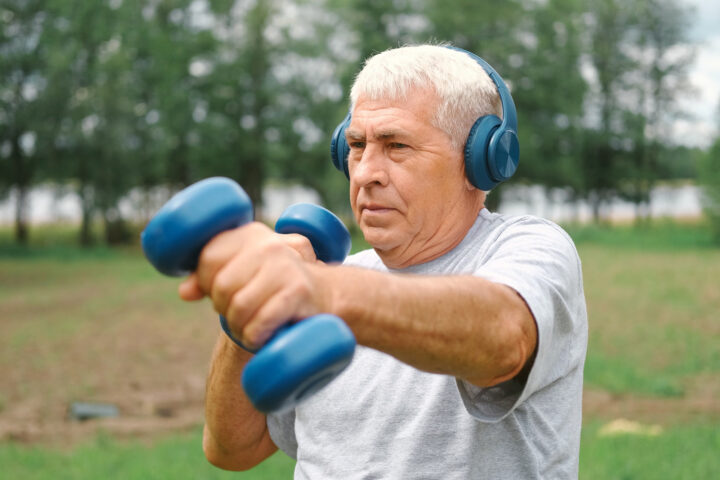The short version
Blue light wavelengths anchor your body clock during the day and delay it at night. In healthy adults, even modest room light during sleep can nudge metabolism in the wrong direction. With age, the eye’s optics change and less blue reaches the brain, which partly explains why older adults often sleep earlier and wake earlier. Screens are bright enough to delay you if used close to bedtime, but they are not powerful enough to “age the eyes” or cause macular disease. Blue-blocking glasses are overhyped for most people. Bright days and dark nights still win.
What “blue light” is and why your brain cares
“Blue” here means short-wavelength visible light that strongly activates melanopsin sensors in a special set of retinal ganglion cells. Those cells project to the circadian clock and control melatonin, alertness, temperature, and more. The best modern guidance expresses biologically effective light as melanopic equivalent daylight illuminance (melanopic EDI). Expert consensus recommends roughly ≥250 melanopic lux by day, ≤10 melanopic lux in the 3 hours before bed, and as dark as possible during sleep.
Daylight: a powerful anti-jetlag drug you already own
Consistent daytime exposure to blue-rich light strengthens circadian amplitude and improves sleep timing. The UK-led expert group above sets practical targets using melanopic EDI so you can tune indoor lighting to mimic daylight patterns. In workplaces, blue-enriched light during daytime improves alertness and performance in several trials, especially when baseline lighting is dim. The through-line is simple: more biologically strong light early, less late.
Night and late evening: small amounts matter
A tightly controlled lab study showed that one night of sleeping with 100 lux of room light raised heart rate during sleep and increased next-morning insulin resistance, compared with sleeping in near-darkness. That is hotel-lamp bright, not a floodlight. Keep bedrooms dark. If you need light, keep it dim and warm and position it low in your visual field.
Large population work using wrist light measures and mortality records echoes this pattern: brighter nights and darker days predict higher mortality risk, consistent with the biology of mistimed light.
Blue light screens, “Night Shift,” and what actually helps
Phones and tablets can suppress melatonin and delay sleep if they are bright, held close, and used in the last hours before bed. A careful test of Apple’s Night Shift found that color shifting alone did not reliably prevent melatonin suppression unless brightness was also reduced or viewing distance increased. Use color shift plus big dimming, and keep screens farther from the eyes. Better yet, switch to audio or paper.
What about blue-blocking glasses for sleep or eye comfort? A Cochrane review pooling randomized trials found little to no benefit for visual performance, eye strain, or sleep compared with standard lenses. If they feel good, fine, but do not expect magic.
With age, the optics change
Aging lenses yellow and transmit less blue, which weakens the melanopic signal reaching the circadian system. Cataract surgery increases blue transmission again. Randomized and controlled studies show surgery can enhance melatonin signaling and improve aspects of sleep, while the choice of blue-blocking versus neutral intraocular lens has subtle and mixed effects on melatonin and sleep efficiency. The big picture: better optics generally support better entrainment.
Blue light, disease risk, and longevity
Chronic circadian disruption is increasingly tied to age-related disease. The International Agency for Research on Cancer classifies night shift work as “probably carcinogenic to humans” due to circadian disruption evidence in animals, mechanistic data, and limited human data. That is not about screens per se, but it underscores how mistimed light can ripple into cancer biology, metabolism, and cardiovascular risk over time.
There is also emerging epidemiology linking higher outdoor light pollution at night with greater Alzheimer’s prevalence, especially under age 65. This is an ecological association with important caveats about confounding. It does align with decades of mechanistic and clinical work showing that circadian dysregulation tracks with neurodegeneration and worse outcomes.
Blue light for eyes and skin: separate the myths from the math
Eye health. Laboratory and animal models show that very intense blue exposures can injure retinal tissue. Real-world screen and LED lighting levels are far below those hazard thresholds, and major ophthalmology bodies state there is no evidence that typical device use causes retinal disease.
Skin. Visible blue light can induce pigmentation and oxidative stress at high doses in darker skin types. Measurements of phones, tablets, and monitors show irradiance that is orders of magnitude lower than sunlight at the same wavelengths, which makes daily device exposure unlikely to harm skin. If hyperpigmentation is a concern, standard photoprotection and antioxidants still apply, but do not overestimate phones as a source.
What this means for sleep today and healthy aging later
For everyone
- Get outside early. Aim for at least 30 to 60 minutes of morning daylight. Indoors, target ≥250 melanopic lux at the eye during the day. That often means opening blinds or using brighter, cooler white light overhead while you work.
- Taper light after sunset. In the 3 hours before bed, aim for ≤10 melanopic lux. Use warm bulbs, dimmers, lamps at or below eye level, and dark mode on screens.
- Sleep in the dark. Block streetlight and standby LEDs. Even 100 lux during sleep can push metabolism in the wrong direction. Eye masks work.
If you are a shift worker
- Use timed bright light and dimmer sleep environments to shape your clock on work days, then plan gradual transitions on off days. Recognize that long-term mistimed light carries risks identified by IARC and protect sleep accordingly.
If you are older or post-cataract
- Ensure ample daytime light exposure, ideally outdoors. Cataract surgery can improve circadian signaling; lens tint choices produce small, mixed sleep effects that are usually less important than total daytime light dose.
If you worry about screens hurting your eyes
- Follow ergonomic and break-taking strategies. Skip blue-blocking glasses for health claims unless you have a personal comfort preference. The authoritative position: screens are not proven to cause retinal disease.
A closer look at key studies
- Consensus recommendations, 2022. An international team translated circadian biology into actionable light levels using melanopic EDI: ≥250 by day, ≤10 in the evening, and as dark as possible at night. These values map to real lamps and meters.
- Room light during sleep, 2022 PNAS. In a crossover lab trial, 100 lux overnight increased sympathetic tone and worsened insulin sensitivity the next morning in healthy adults.
- Blue-blocking glasses, 2023 Cochrane. Across randomized trials, blue-filter lenses did not improve eye strain, sleep, or macular outcomes compared with clear lenses.
- “Night Shift” color shift, controlled tests. Shifting hue without dimming did not reliably prevent melatonin suppression from evening screen use, highlighting brightness and timing as the real levers.
- Cataract and circadian function. Controlled trials show surgery increases melatonin secretion and can improve sleep metrics; differences between blue-blocking and neutral lenses are modest and mixed.
- Light timing and mortality, 2024 PNAS. Wearable data from thousands of people found that brighter nights and darker days predicted higher mortality risk, consistent with the biology of mistimed light.
- Light pollution and Alzheimer’s, 2024. An ecological study linked brighter outdoor night light with higher Alzheimer’s prevalence, especially under 65. Association does not prove causation, yet it fits mechanistic expectations and emphasizes light hygiene as low-risk prevention.
- Device blue light and skin dose, 2025. Direct dosimetry shows very low irradiance from common devices. Daily use levels are unlikely to harm skin.
Blue light myth-to-fact quick hits
- “Screens cause macular degeneration.” Not supported at everyday levels. Major eye groups like the American Academy of Ophthalmology say “no.”
- “Blue-blocking glasses fix sleep.” Evidence is weak. Move, dim, or remove evening light instead.
- “Night Shift solves bedtime.” Not unless you also lower brightness and increase distance or switch to print/audio.
- “All blue light is bad.” You need bright, blue-rich light by day. The problem is timing, not the photon itself.
A practical lighting playbook you can use tonight
- Chase morning light. Coffee on the porch, blinds open at breakfast. If indoors only, aim for brighter overheads until lunch.
- Pull the dimmer after dinner. Swap to warm lamps, reduce overheads, and keep screens at arm’s length on the lowest comfortable brightness.
- Make the bedroom boringly dark. Blackout curtains or an eye mask. Cover status LEDs. Nightlights low and warm if needed. That 100-lux study is your nudge.
- Protect your days, not just your nights. If your daylight is anemic, you are fighting uphill. Prioritize a walk outside or a bright workspace.
Where blue light fits into healthy longevity
The best evidence connects light timing to downstream risks that accumulate with age. Robust days and dark nights support metabolic health, cognition, mood, and the circadian infrastructure that keeps systems coordinated. That is a lever you can pull for free, starting today.
If you want, I can translate these targets into a one-page “light hygiene checklist” for your office and bedroom, with melanopic EDI rough-equivalents for common bulbs and fixtures.
References
- Brown, T. M., Brainard, G. C., Cajochen, C., Czeisler, C. A., Hanifin, J. P., Lockley, S. W., Lucas, R. J., Münch, M., O’Hagan, J. B., Peirson, S. N., Price, L. L. A., Roenneberg, T., Schlangen, L. J. M., Skene, D. J., Spitschan, M., Vetter, C., Zee, P. C., & Wright, K. P., Jr. (2022). Recommendations for daytime, evening, and nighttime indoor light exposure to best support physiology, sleep, and wakefulness in healthy adults. PLOS Biology, 20(3), e3001571. https://doi.org/10.1371/journal.pbio.3001571
- Cajochen, C., Münch, M., Kobialka, S., Kräuchi, K., Steiner, R., Oelhafen, P., Orgül, S., & Wirz-Justice, A. (2005). High sensitivity of human melatonin, alertness, thermoregulation, and heart rate to short-wavelength light. The Journal of Clinical Endocrinology & Metabolism, 90(3), 1311–1316. https://doi.org/10.1210/jc.2004-0957
- Mason, I. C., Grimaldi, D., Reid, K. J., Warlick, C. D., Malkani, R. G., Abbott, S. M., & Zee, P. C. (2022). Light exposure during sleep impairs cardiometabolic function. Proceedings of the National Academy of Sciences, 119(12), e2113290119. https://doi.org/10.1073/pnas.2113290119
- Nagare, R., Plitnick, B., & Figueiro, M. G. (2019). Does the iPad Night Shift mode reduce melatonin suppression? Lighting Research & Technology, 51(3), 373–383. https://doi.org/10.1177/1477153517748189
- Phillips, A. J. K., Vidafar, P., Burns, A. C., McGlashan, E. M., Anderson, C., Rajaratnam, S. M. W., Lockley, S. W., & Cain, S. W. (2019). High sensitivity and interindividual variability in the response of the human circadian system to evening light. Proceedings of the National Academy of Sciences, 116(24), 12019–12024. https://doi.org/10.1073/pnas.1901824116
- Singh, S., Keller, P. R., Busija, L., McMillan, P., Makrai, E., Lawrenson, J. G., Hull, C. C., & Downie, L. E. (2023). Blue-light filtering spectacle lenses for visual performance, sleep, and macular health in adults. Cochrane Database of Systematic Reviews, 2023(8), CD013244.pub2. https://doi.org/10.1002/14651858.CD013244.pub2
- Windred, D. P., Burns, A. C., Lane, J. M., Olivier, P., Rutter, M. K., Saxena, R., Phillips, A. J. K., & Cain, S. W. (2024). Brighter nights and darker days predict higher mortality risk: A prospective analysis of personal light exposure in >88,000 individuals. Proceedings of the National Academy of Sciences, 121(43), e2405924121. https://doi.org/10.1073/pnas.2405924121
- Brøndsted, A. E., Haargaard, B., Sander, B., Lund-Andersen, H., Jennum, P., & Kessel, L. (2017). The effect of blue-blocking and neutral intraocular lenses on circadian photoentrainment and sleep one year after cataract surgery. Acta Ophthalmologica, 95(4), 344–351. https://doi.org/10.1111/aos.13323
- Lucas, R. J., Peirson, S. N., Berson, D. M., Brown, T. M., Cooper, H. M., Czeisler, C. A., Figueiro, M. G., Gamlin, P. D., Lockley, S. W., O’Hagan, J. B., Price, L. L. A., Provencio, I., Skene, D. J., & Brainard, G. C. (2014). Measuring and using light in the melanopsin age. Trends in Neurosciences, 37(1), 1–9. https://doi.org/10.1016/j.tins.2013.10.004










